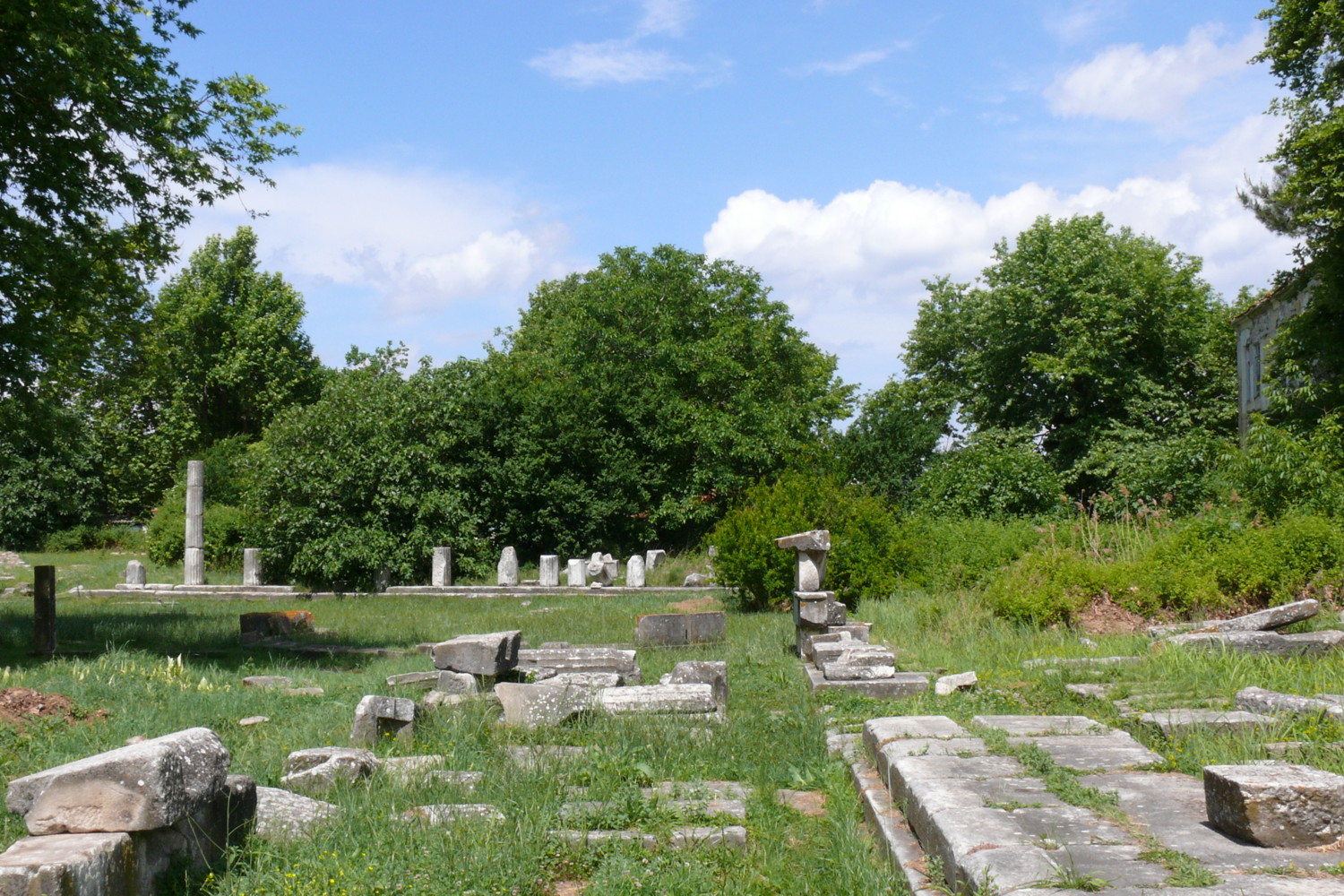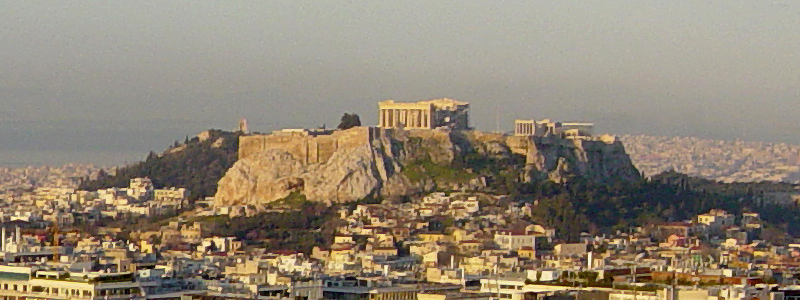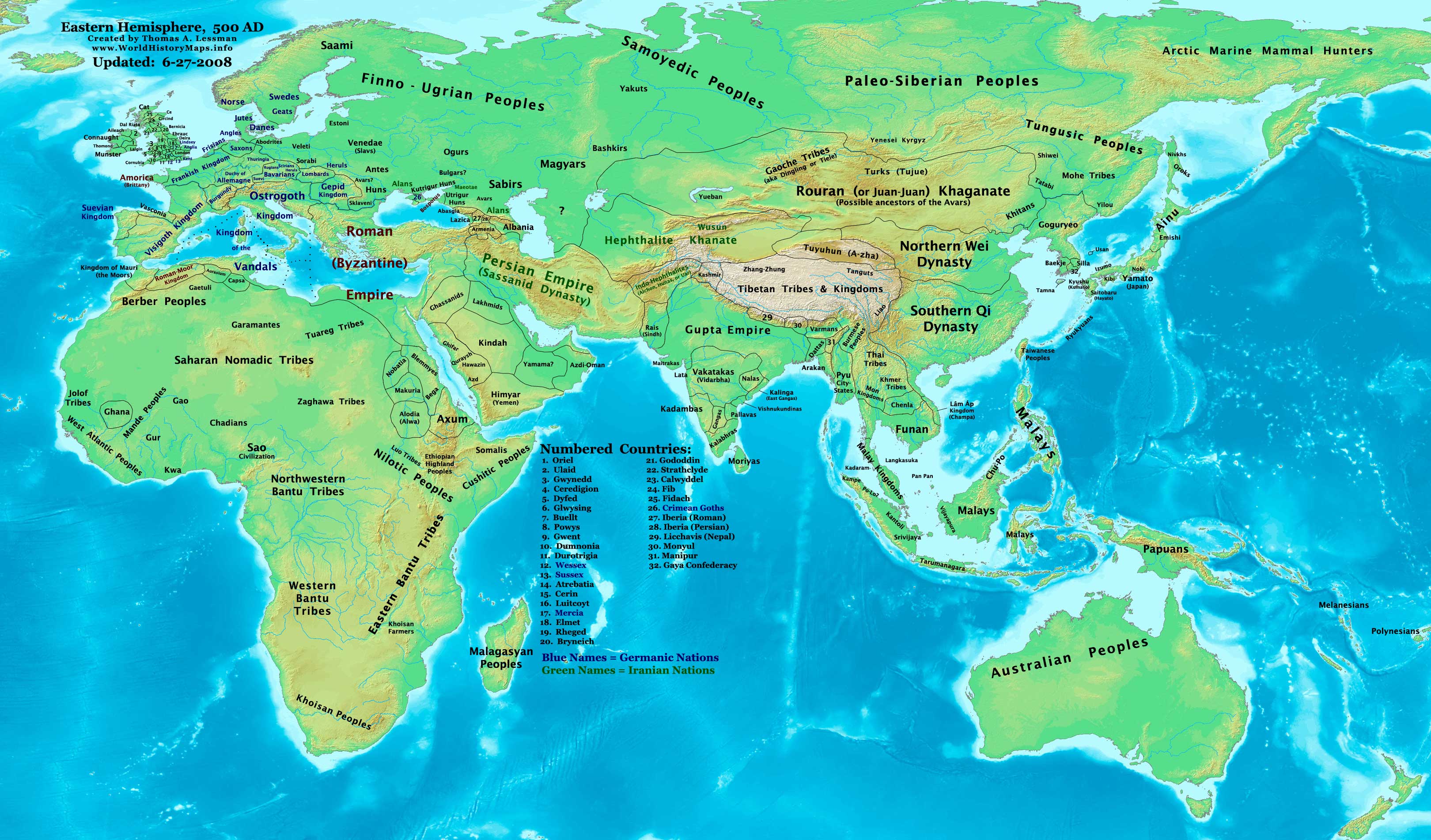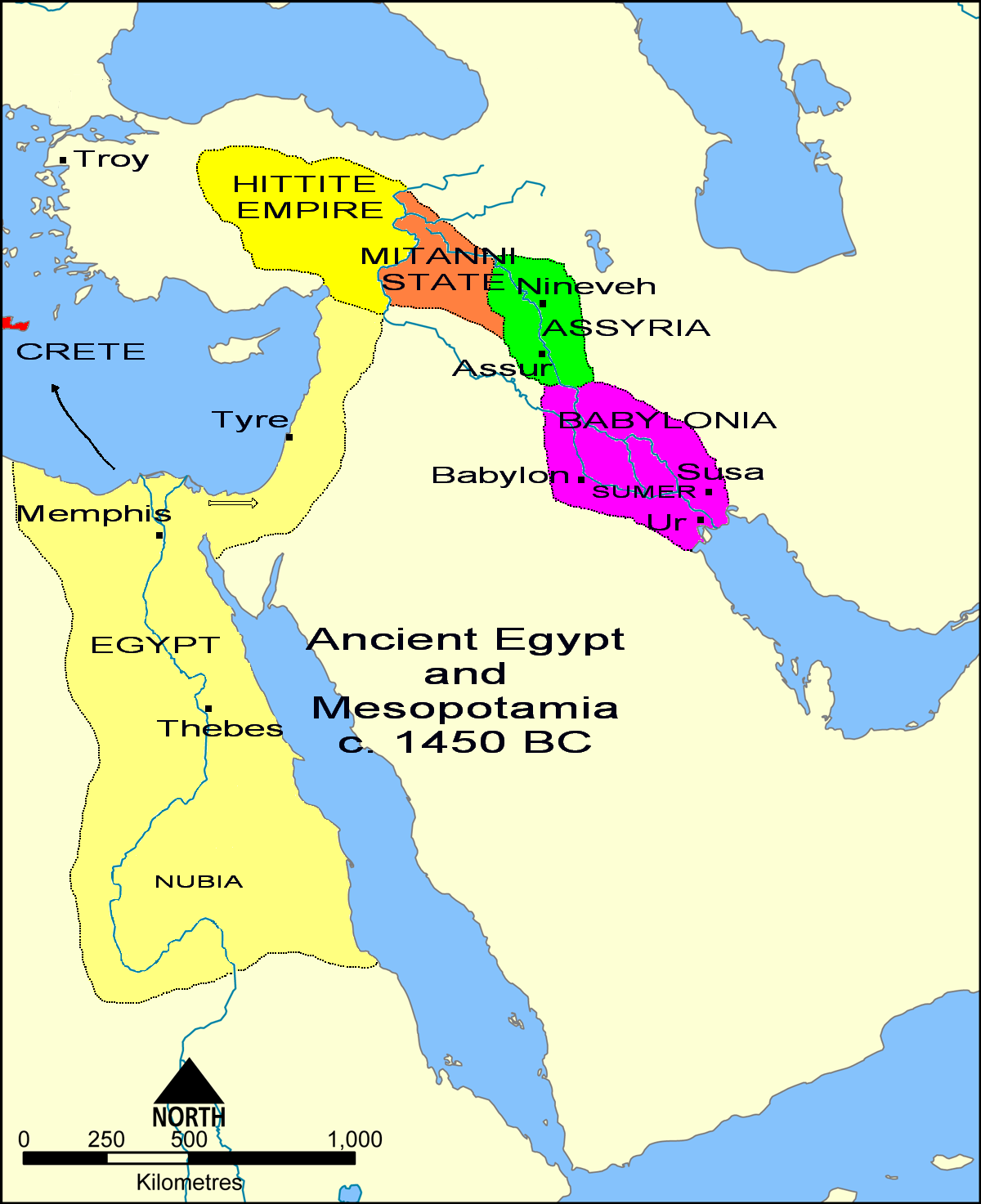|
Polygnotus
Polygnotus ( el, Πολύγνωτος ''Polygnotos'') was an ancient Greek painter from the middle of the 5th century BC. Life He was the son and pupil of Aglaophon. He was a native of Thasos, but was adopted by the Athenians, and admitted to their citizenship. During the time of Cimon, Polygnotus painted for the Athenians a picture of the taking of Troy on the walls of the Stoa Poikile, and another of the marriage of the daughters of Leucippus in the Anacaeum. Plutarch mentions that historians and the poet Melanthius attest that Polygnotus did not paint for the money but rather out of a charitable feeling towards the Athenian people. In the hall at the entrance to the Acropolis other works of his were preserved. The most important of his paintings were his frescoes in the Lesche of the Knidians, a building erected at Delphi by the people of Cnidus. The subjects of these were the visit to Hades by Odysseus and the taking of Troy. The traveller Pausanias recorded a car ... [...More Info...] [...Related Items...] OR: [Wikipedia] [Google] [Baidu] |
Stoa Poikile
The Stoa Poikile (, ) or Painted Porch, originally called the Porch of Peisianax (, ), was a stoa (a covered walkway or portico) erected during the 5th century BC and was located on the north side of the Ancient Agora of Athens. The Stoa Poikile was one of the most famous sites in ancient Athens, owing its fame to the paintings and loot from wars displayed in it. Overview The Stoa was the location from which Zeno of Citium taught Stoicism. The philosophical school of Stoicism takes its name from having first been expounded here, and was derived from the Greek word ''stoa''. Zeno taught and lectured to his followers from this porch. Excavations carried out by the American School of Classical Studies at Athens over the past two decades have revealed much of the foundations and some lower elements of the stoa on the north side of the Athenian Agora; it had a Doric columnar facade and an Ionic interior colonnade. The Stoa Poikile was decorated by fresco painter and sculptor Micon ... [...More Info...] [...Related Items...] OR: [Wikipedia] [Google] [Baidu] |
Lesche Of The Knidians
The Lesche of the Knidians (also known as the Lesche of the Cnidians) was a Lesche, i.e. a club or meeting place, at the sanctuary of Apollo in Delphi, it is one of those structures there that was destroyed in their most part. Today, the only surviving parts are some architectural relics. It hosted two famous paintings by the famous painter Polygnotus the Thasian, namely the Capture of Troy and the Nekyia. It was built in the second quarter of the 5th century B.C. Apparently a rectangular building bearing a clerestory along its western side and possibly had a tripartite interior arrangement. In the 4th century along its southern side was added a wall for placing ex votos. Description The Lesche of the Knidians is one of the most renowned buildings within the sanctuary of Apollo in Delphi, north of the temple of Apollo, due to the two famous paintings of the Thasian painter Polygnotus it hosted, namely the Capture of Troy (Iliou Persis) and the Nekyia (the visit of Odysseus to Hades ... [...More Info...] [...Related Items...] OR: [Wikipedia] [Google] [Baidu] |
Thasos
Thasos or Thassos ( el, Θάσος, ''Thásos'') is a Greek island in the North Aegean Sea. It is the northernmost major Greek island, and 12th largest by area. The island has an area of and a population of about 13,000. It forms a separate regional unit within the East Macedonia and Thrace region. Before the local administration reform of 2011, it was part of the Kavala Prefecture. The largest town and the capital is Thasos, officially known as ''Limenas Thasou'', "Port of Thasos", situated at the northern side. It is connected with the mainland by regular ferry lines between Keramoti and Thassos town, and between the regional centre of Kavala and Skala Prinou. Thasos's economy relies on timber from its forests, marble quarries, olive oil, and honey. Tourism has also become important since the 1960s, although not to the level of other Greek islands. History Mythology Staphylus ( grc, Στάφυλος), the beloved son of god Dionysus, lived in Thasos. Prehistory Lyi ... [...More Info...] [...Related Items...] OR: [Wikipedia] [Google] [Baidu] |
Aglaophon
Aglaophon ( grc, Ἀγλαοφῶν ''Aglaofon'') was an ancient Greek painter, born on the island of Thasos. He was the father and instructor of Polygnotus. He had another son named Aristophon. As Polygnotus flourished before the 90th Olympiad,Pliny the Elder, '' Natural History'' xxxv. 9. s. 35-36 Aglaophon probably lived around the 70th Olympiad, that is, around the late 6th or early 5th century BC. Quintilian praises his paintings, which were distinguished by the simplicity of their coloring, as worthy of admiration on other grounds besides their antiquity. Aglaophon the Younger There was an Aglaophon who flourished in the 90th Olympiad, according to Pliny, and his statement is confirmed by a passage of Athenaeus from which we learn that he painted two pictures, in one of which Olympias and Pythia, as the presiding geniuses of the Olympic and Pythian Games, were represented crowning Alcibiades; in the other, Nemea, the presiding deity of the Nemean games, held Alcibiade ... [...More Info...] [...Related Items...] OR: [Wikipedia] [Google] [Baidu] |
Acropolis, Athens
The Acropolis of Athens is an ancient citadel located on a rocky outcrop above the city of Athens and contains the remains of several ancient buildings of great architectural and historical significance, the most famous being the Parthenon. The word ''acropolis'' is from the Greek words (''akron'', "highest point, extremity") and (''polis'', "city"). The term acropolis is generic and there are many other acropoleis in Greece. During ancient times the Acropolis of Athens was known also more properly as Cecropia, after the legendary serpent-man, Cecrops, the supposed first Athenian king. While there is evidence that the hill was inhabited as far back as the fourth millennium BC, it was Pericles (c. 495–429 BC) in the fifth century BC who coordinated the construction of the buildings whose present remains are the site's most important ones, including the Parthenon, the Propylaea, the Erechtheion and the Temple of Athena Nike. The Parthenon and the other buildings were serio ... [...More Info...] [...Related Items...] OR: [Wikipedia] [Google] [Baidu] |
5th-century BC Greek People
The 5th century is the time period from 401 ( CDI) through 500 ( D) ''Anno Domini'' (AD) or Common Era (CE) in the Julian calendar. The 5th century is noted for being a period of migration and political instability throughout Eurasia. It saw the collapse of the Western Roman Empire, which came to an end in 476 AD. This empire had been ruled by a succession of weak emperors, with the real political might being increasingly concentrated among military leaders. Internal instability allowed a Visigoth army to reach and ransack Rome in 410. Some recovery took place during the following decades, but the Western Empire received another serious blow when a second foreign group, the Vandals, occupied Carthage, capital of an extremely important province in Africa. Attempts to retake the province were interrupted by the invasion of the Huns under Attila. After Attila's defeat, both Eastern and Western empires joined forces for a final assault on Vandal North Africa, but this campaign was a s ... [...More Info...] [...Related Items...] OR: [Wikipedia] [Google] [Baidu] |
Artists Of Ancient Thasos
An artist is a person engaged in an activity related to creating art, practicing the arts, or demonstrating an art. The common usage in both everyday speech and academic discourse refers to a practitioner in the visual arts only. However, the term is also often used in the entertainment business, especially in a business context, for musicians and other performers (although less often for actors). "Artiste" (French for artist) is a variant used in English in this context, but this use has become rare. Use of the term "artist" to describe writers is valid, but less common, and mostly restricted to contexts like used in criticism. Dictionary definitions The ''Oxford English Dictionary'' defines the older broad meanings of the term "artist": * A learned person or Master of Arts. * One who pursues a practical science, traditionally medicine, astrology, alchemy, chemistry. * A follower of a pursuit in which skill comes by study or practice. * A follower of a manual art, such as a ... [...More Info...] [...Related Items...] OR: [Wikipedia] [Google] [Baidu] |
Ancient Greek Painters
Ancient history is a time period from the beginning of writing and recorded human history to as far as late antiquity. The span of recorded history is roughly 5,000 years, beginning with the Sumerian cuneiform script. Ancient history covers all continents inhabited by humans in the period 3000 BCAD 500. The three-age system periodizes ancient history into the Stone Age, the Bronze Age, and the Iron Age, with recorded history generally considered to begin with the Bronze Age. The start and end of the three ages varies between world regions. In many regions the Bronze Age is generally considered to begin a few centuries prior to 3000 BC, while the end of the Iron Age varies from the early first millennium BC in some regions to the late first millennium AD in others. During the time period of ancient history, the world population was already exponentially increasing due to the Neolithic Revolution, which was in full progress. While in 10,000 BC, the world population stood ... [...More Info...] [...Related Items...] OR: [Wikipedia] [Google] [Baidu] |
Loeb Classical Library
The Loeb Classical Library (LCL; named after James Loeb; , ) is a series of books originally published by Heinemann_(publisher), Heinemann in London, but is currently published by Harvard University Press. The library contains important works of ancient Greek literature, Greek and Latin literature designed to make the text accessible to the broadest possible audience by presenting the original Greek or Latin text on each left-hand page, and a fairly literal translation on the facing page. The General Editor is Jeffrey Henderson, holder of the William Goodwin Aurelio Professorship of Greek Language and Literature at Boston University. History The Loeb Classical Library was conceived and initially funded by the Jewish-German-American banker and philanthropist James Loeb (1867–1933). The first volumes were edited by Thomas Ethelbert Page, W. H. D. Rouse, and Edward Capps, and published by Heinemann (publisher), William Heinemann, Ltd. (London) in 1912, already in their distinct ... [...More Info...] [...Related Items...] OR: [Wikipedia] [Google] [Baidu] |
Pheidias
Phidias or Pheidias (; grc, Φειδίας, ''Pheidias''; 480 – 430 BC) was a Greek sculptor, painter, and architect. His Statue of Zeus at Olympia was one of the Seven Wonders of the Ancient World. Phidias also designed the statues of the goddess Athena on the Athenian Acropolis, namely the ''Athena Parthenos'' inside the Parthenon, and the ''Athena Promachos'', a colossal bronze which stood between it and the Propylaea, a monumental gateway that served as the entrance to the Acropolis in Athens. Phidias was the son of Charmides of Athens. The ancients believed that his masters were Hegias and Ageladas. Plutarch discusses Phidias' friendship with the Greek statesman Pericles, recording that enemies of Pericles tried to attack him through Phidias – who was accused of stealing gold intended for the Parthenon's statue of Athena, and of impiously portraying himself and Pericles on the shield of the statue. The historical value of this account, as well as the legend ... [...More Info...] [...Related Items...] OR: [Wikipedia] [Google] [Baidu] |
Pausanias (geographer)
Pausanias ( /pɔːˈseɪniəs/; grc-gre, Παυσανίας; c. 110 – c. 180) was a Greek traveler and geographer of the second century AD. He is famous for his ''Description of Greece'' (, ), a lengthy work that describes ancient Greece from his firsthand observations. ''Description of Greece'' provides crucial information for making links between classical literature and modern archaeology. Biography Not much is known about Pausanias apart from what historians can piece together from his own writing. However, it is mostly certain that he was born c. 110 AD into a Greek family and was probably a native of Lydia in Asia Minor. From c. 150 until his death in 180, Pausanias travelled through the mainland of Greece, writing about various monuments, sacred spaces, and significant geographical sites along the way. In writing ''Description of Greece'', Pausanias sought to put together a lasting written account of "all things Greek", or ''panta ta hellenika''. Living in th ... [...More Info...] [...Related Items...] OR: [Wikipedia] [Google] [Baidu] |
Odysseus
Odysseus ( ; grc-gre, Ὀδυσσεύς, Ὀδυσεύς, OdysseúsOdyseús, ), also known by the Latin variant Ulysses ( , ; lat, UlyssesUlixes), is a legendary Greek king of Ithaca and the hero of Homer's epic poem the ''Odyssey''. Odysseus also plays a key role in Homer's ''Iliad'' and other works in that same epic cycle. Son of Laërtes and Anticlea, husband of Penelope, and father of Telemachus and Acusilaus, Odysseus is renowned for his intellectual brilliance, guile, and versatility (''polytropos''), and is thus known by the epithet Odysseus the Cunning ( grc-gre, μῆτις, mêtis, cunning intelligence). He is most famous for his '' nostos'', or "homecoming", which took him ten eventful years after the decade-long Trojan War. Name, etymology, and epithets The form ''Odys(s)eus'' is used starting in the epic period and through the classical period, but various other forms are also found. In vase inscriptions, we find the variants ''Oliseus'' (), ''Olyseus' ... [...More Info...] [...Related Items...] OR: [Wikipedia] [Google] [Baidu] |






